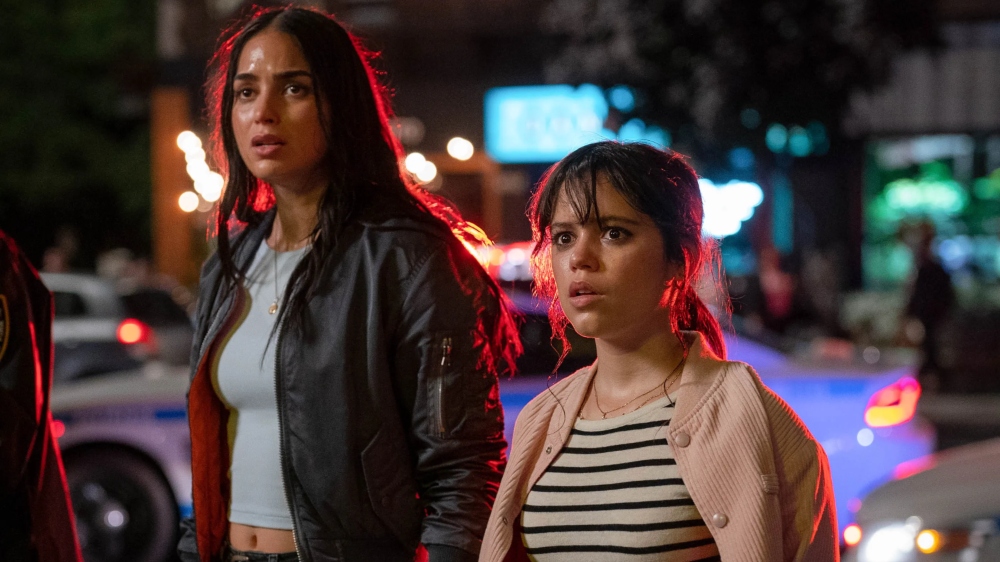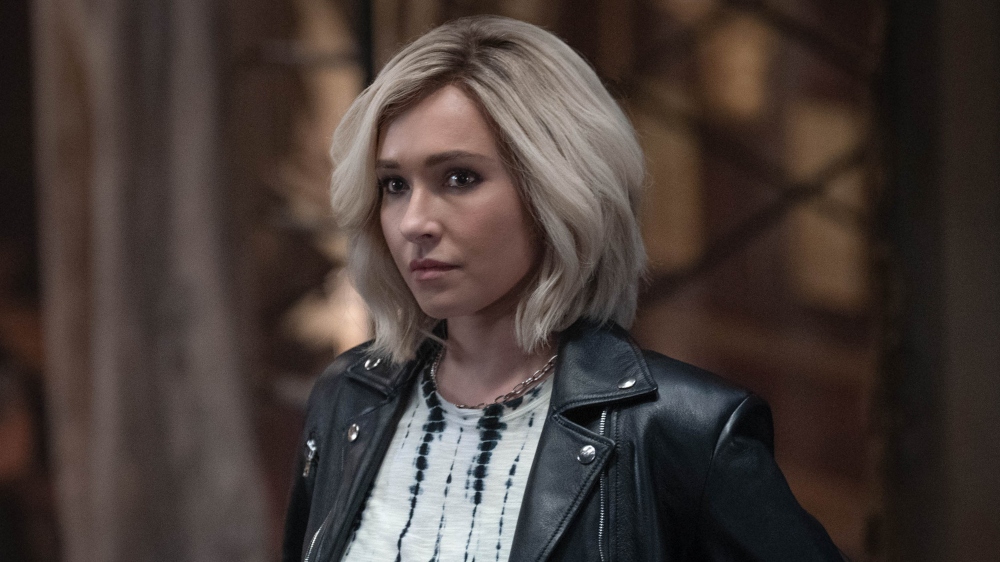The Scream franchise is now over 25 years old, surpassing in age most of its current target audience. The latest installment, Scream VI, perfectly encapsulates the new generation it is aimed at — fun and entertaining but also soft, mindless, and noncommittal. Though the old formula still works, surprisingly, the cleverness that made Wes Craven and Kevin Williamson‘s original so brilliant is totally slashed off the screen, as the blade with which modern audiences cut becomes duller and duller.
Last year, nostalgic audiences flocked to the franchise’s reboot, excuse me, “requel,” which was also titled Scream, though it was really the fifth chapter in the series, which began as a small indie film in 1996. The nostalgia is strong here, which makes sense given that the entire premise of this franchise is a remembrance of the slashers of yore, most centrally Halloween, but also Friday the 13th and The Texas Chainsaw Massacre, among others.
In last year’s movie, a new set of characters revived the franchise, which had been dormant since an ill-advised fourth chapter in 2011. The film took some risks while adapting itself to the modern, progressive values of most young audience members even though it was overall preposterous. Even original cast members Neve Campbell, David Arquette, and Courtney Cox couldn’t save it, and in the end, it was obvious that both a new generation would have to take over, and that the new movies would continue to be frustratingly pale versions of the original.
The sixth entry, once again directed by Matt Bettinelli-Olpin and Tyler Gillett, is a sequel that essentially functions, according to its characters, as the official establishment of a “franchise.” As such, the movie is purposefully constructed to emulate the franchise’s original sequel, Scream 2, though even there, Scream VI again fails to live up entirely to the promise of its potential.

Following another killer opening sequence, something that has become this franchise’s signature, the film abandons Woodsboro for New York City, where sisters Sam and Tara Carpenter, played by Melissa Barrera and Jenna Ortega, are recovering from the trauma of last year’s killing spree. The former lives in fear, the latter in lust. Their friends, twins Mindy and Chad Meeks-Martin, played by Jasmin Savoy Brown and Mason Gooding, have also moved to the Big Apple, and the Fearsome Foursome, as they so horridly call each other later, are now college students at Blackmore University when a new Ghostface appears to carve up the proceedings.
Scream VI features one or two inventive and exciting murder sequences — one atop a ladder adjoining two buildings comes to mind — but the conceit of setting the film in New York City is mostly abandoned outside a non-committal subway chase scene and a violent bodega showdown. We are here for the phone calls with the creepy voice, and the inevitably convoluted reveal of how the killer(s) have some strange connection to Billy Loomis (Skeet Ulrich), the sadistic killer who has somehow lasted in this franchise longer than Campbell’s Sidney Prescott despite being killed at the end of the first film. Perhaps you’re here to see the return of Hayden Panettiere‘s Kirby Reed, who survived the events of Scream 4 and became an FBI agent. Those hoping to see a lot of Cox’s Gale Weathers will be disappointed, as her role is unfortunately much more limited this time around.
The most entertaining scene is one at Blackmore University, where the Fearsome Foursome and some of their new friends sit around and discuss the “rules” of the sixth entry in what is now termed a horror movie franchise. This effective scene is edited and shot to emulate a similar sequence in both the original Scream and its follow-up, where the students/suspects/soon-to-be-victims sit around discussing which of them may die and at whose hands. The scene is a cornerstone of the silly, superficial, and dark humor that characterizes the Scream movies, and it is beautifully executed this time around to great comedic success. To wit, the rules revolve around the notion that “everyone is a suspect…” and expendable, as Mindy and Chad’s late uncle Randy (Jamie Kennedy) explained in the first two movies. To hear his niece repeat those lines with aplomb and the eye-winking excitement with which Savoy Brown performs this monologue is deliciously entertaining.

However, the wheels come off shortly after that. This is 2023, after all, and our modern audiences, for all of their purported disdain (some of it spot on, some of it misguided) of the values of the generations that preceded them, are some of the most sensitive and soft in modern memory. These filmgoers want entertainment that is merely low-hanging fruit that they don’t have to think too much about. Living up to those “anything can happen” rules is completely impossible for Screenwriters James Vanderbilt (Zodiac) and Guy Busick (Ready or Not).
You can blame the audience or blame the system, but killing off certain categories of people is both unacceptable to audiences who demand satisfaction, as well as unthinkable for studios afraid of political third rails, not to mention the killing of the golden goose. As entertaining and creative as Scream VI can be at times — and its inherent “meta” element is fairly effective, particularly in one brutal sequence that pays homage to all the other films and killers — the film simply never has the courage of its own slasher convictions, a weakness it telegraphs early and often to very predictable effect.
So it is that long before the credits roll that you will know who will be carted off to the hospital instead of the morgue and who, therefore and by process of elimination, will reveal him or herself when Ghostface’s mask is finally lifted. You can set all of that aside, of course, if you let yourself sink into the mindless slasher fare that this sequel so gleefully provides as it splatters the city’s shared walls with blood.
See you at the Scream VII premiere…
Grade: B
Scream VI is now playing in theaters nationwide courtesy of Paramount Pictures and Spyglass Media Group.





